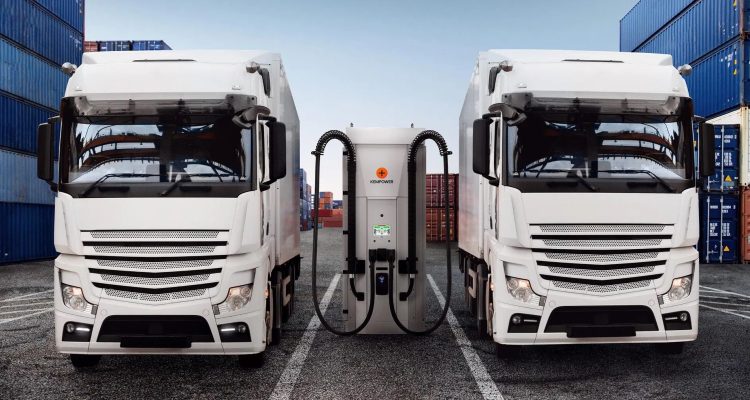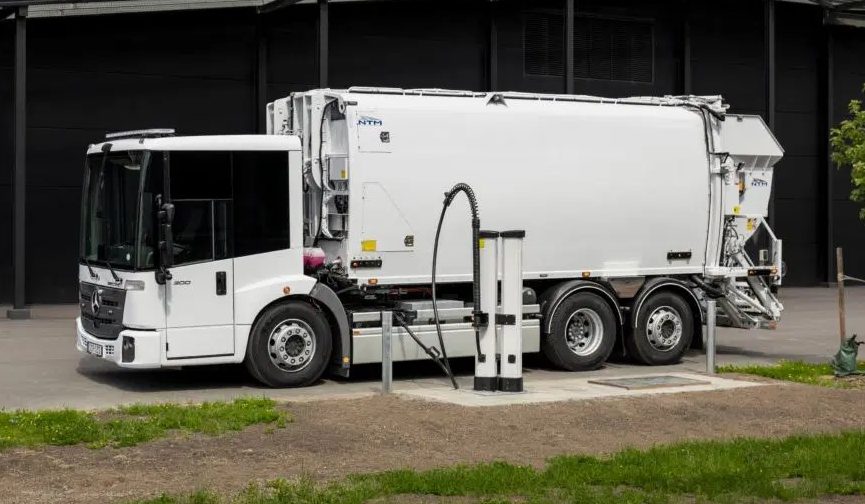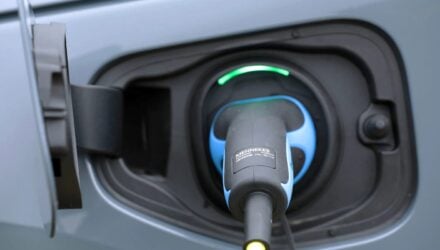The next half a year will mark the start of an electric heavy goods vehicle (eHGV) revolution, as new long-range models arrive with megawatt-charging capability. These e-trucks can charge at over 1,000 kW, enabling long-haul journeys without added delays.
Gareth Sutcliffe, Sales Manager for Commercial Fleets (UK & Ireland) at Kempower discusses, in this article, the business case for seriously considering the viability of electric trucks.
The benefits of electrification are clear: lower carbon emissions, zero exhaust pollutants, and quieter roads. Drivers are also often finding eHGVs to be easier and more relaxing to drive.
The charging technology is ready too – it’s been used in pilots and trials and now capable of recharging eHGVs in under two hours. For delivery and medium-haul routes, overnight or rest-period charging has already made electric fleets viable. Long-haul logistics, however, require full recharges during legally mandated 45-minute rest stops.
That is where the new megawatt charging system (MCS) comes in. Developed alongside next-generation eHGVs, MCS supports sub-45-minute charging and builds on proven technology such as Kempower’s modular Power Units. Cooling systems, sophisticated electronics and advanced batteries have made these extreme power levels feasible. The challenge now is not technology readiness but scaling infrastructure.
E-trucks and on-route high-powered charging: What comes first?
What came first, the chicken or the egg?
This age-old conundrum has fascinated generations and become a metaphor for situations where it’s unclear which of two events must occur first to set the other in motion. It’s a common phenomenon in technology and infrastructure – without sufficient infrastructure, people will hesitate to adopt the tech, but without enough consumers adopting the tech, providers will hesitate to invest in the infrastructure.
While MCS technology is now developed and capable of electrifying long-haul truck journeys, we face the risk of a typical ‘chicken-and-egg’ narrative unfolding.
On-site charging in depots will play a vital part in transitioning long-haul trucking, but fortunately logistics companies can invest in the infrastructure in step with their own investment into the vehicles – they can guarantee utilization of the depot chargers because they know the size and operational schedules of their e-truck fleets.
The real challenge comes with developing a network of public ultra-high powered infrastructure to cater for those quick bursts of MCS charging during the shortest legal breaks. In order for logistics companies to invest in these new e-trucks for their long-haul operations, the ultra-high powered charging infrastructure must be readily available, at scale, along logistics routes – something that is not currently in place. On the other hand, from the perspective of public truck charging operators, it understandably may feel a business risk to invest in MCS infrastructure when the uptake of MCS e-trucks is still in the very early stages.
This doesn’t need to be a stand-off, though. It’s possible, realistic and business-sensible for public, on-route charging operators to expand their offerings to fill the current gap in truck charging options, and to do so now.
MCS and public charging operators: The case for early investment
Public charging operators may be apprehensive to place their bets ahead of the curve and invest in a brand new charging technology, but the most advanced ultra-high powered charging infrastructure on the market today is designed to remove the business risks by increasing utilisation.
Charging operators have access to distributed MCS solutions which:
- are already available on the market
- can dynamically shift the power output between charging outlets depending on the power demands of each vehicle
- can deliver up to a megawatt of power but also deliver lower levels too, facilitating charging in both next-generation MCS e-trucks and the existing, lower-powered e-trucks already on the road in higher numbers
- can coexist with the existing charging standard, combined charging system (CCS), during the transition period as the power can also be shared between different types of plugs
So, investing in the infrastructure early doesn’t have to mean waiting around for income as MCS trucks are adopted on a mass scale – charging operators can be making a return on their investment from day one.
Operators are also empowered to provide charging both for e-truck drivers on their shortest minimum breaks of 45 minutes and drivers on their longer overnight stops of up to 11 hours. These longer charging stops will naturally require a lower amount of power as the trucks have a much longer period to fully recharge, much unlike the 45-minute scenario. Distributed charging allows operators to use the same system and power units to supply charging for both scenarios, with the highest powers being dynamically delivered to the vehicles that need it most urgently and charging times being optimised across the board.
At large truck charging stations, the flexibility of new systems allows operators to serve these distinct charging needs efficiently as, even when a single power unit is used, short-stay and long-stay bays can remain separated. What’s more is that, by choosing modular infrastructure, operators can add to their charging systems over time as MCS trucks become even more commonplace on our roads.
Unlocking the megawatt opportunity
We’re proud to say that megawatt charging is officially here, but the technology coming to market is just the start of what’s needed to deliver a complete transition. We’re closer than ever to 100% electrification of trucking, but the final stretch will be the toughest yet, with coordinated participation needed from a broad range of stakeholders.
There’s no doubt that there is a feeling of pressure coming from the industry as those championing MCS look to public charging operators to take what seems like a leap of faith.
Nevertheless, MCS infrastructure, when developed with market-leading technical characteristics like distributed charging and modularity, can be sensibly integrated into public truck charging sites now. The new potential growth that will come from this is huge, and charging operators stand to benefit significantly from this by buying into the movement.
The megawatt opportunity is unprecedented and holds the key to fully electrifying the trucking industry, but only with bold action and collaboration will we realise the full potential.







